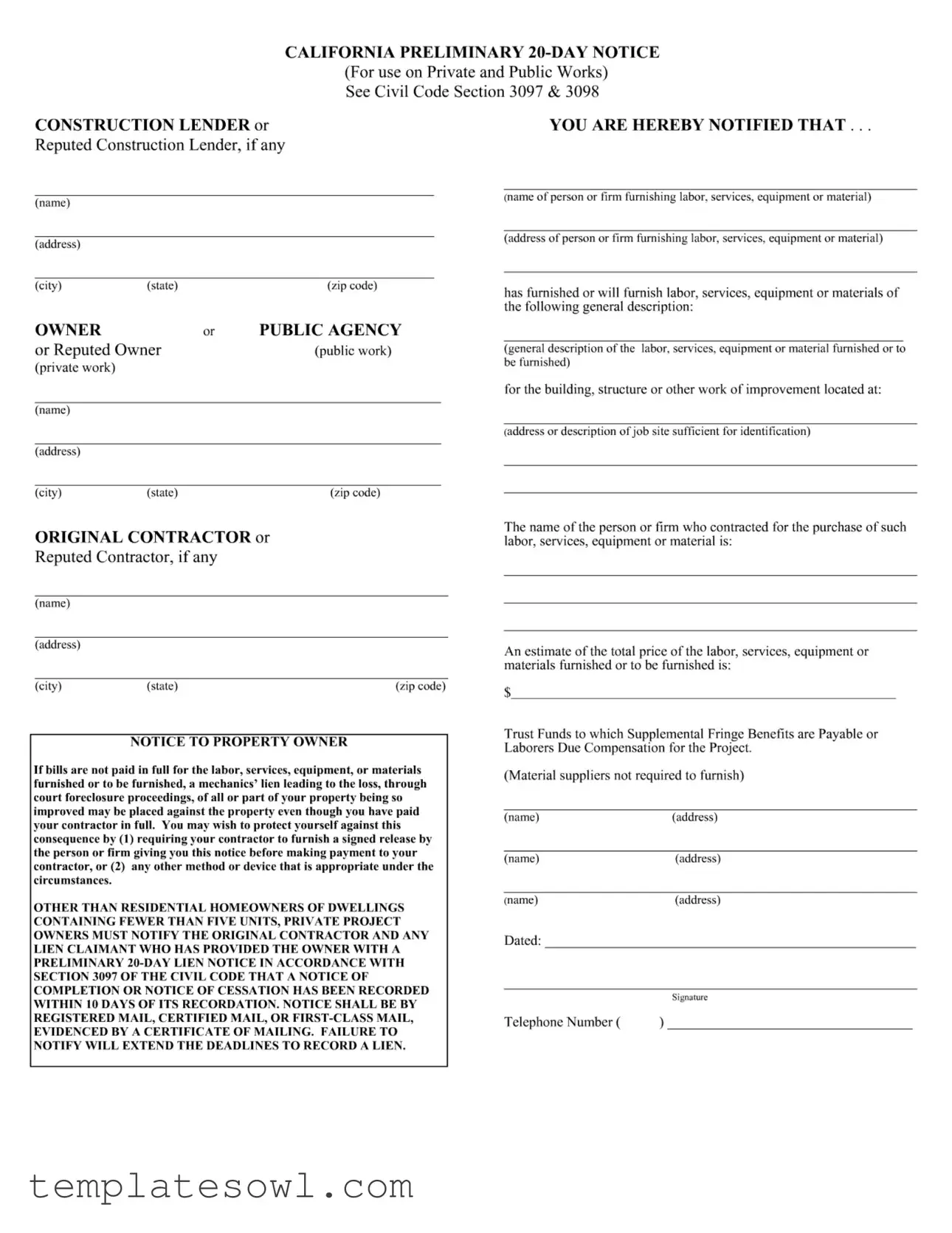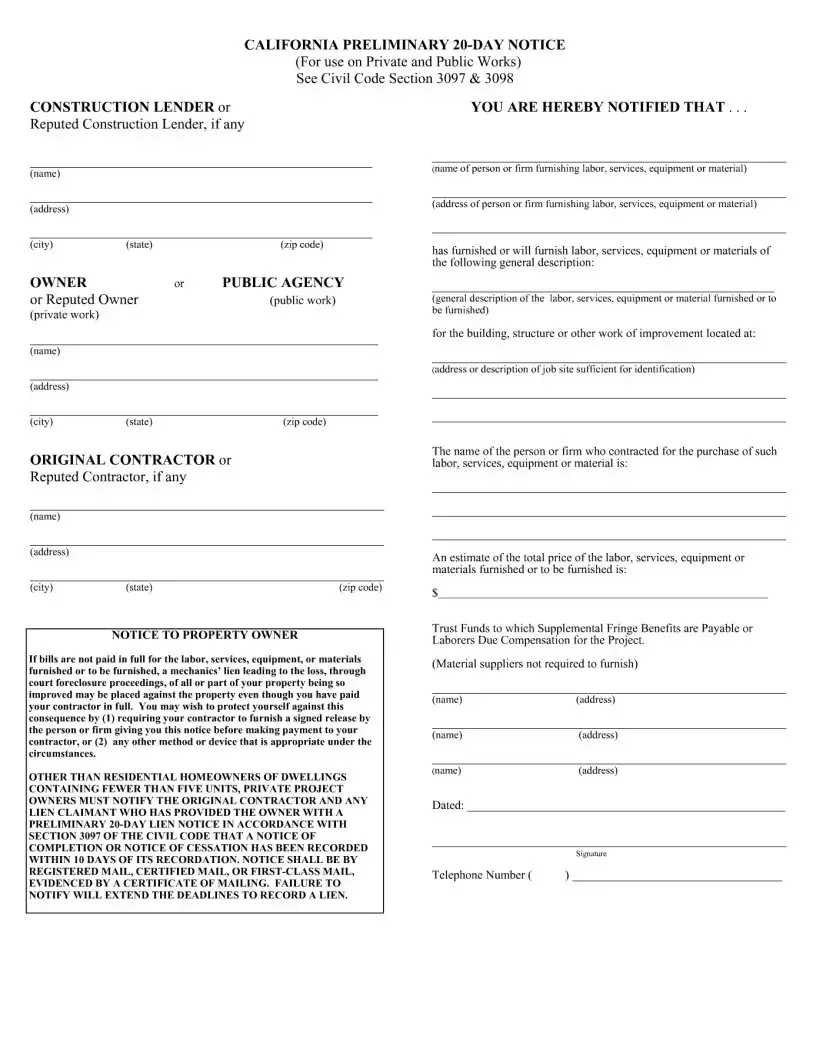When completing the California Preliminary 20 Day Notice form, individuals commonly make mistakes that can lead to serious issues down the line. One significant error is the omission of critical details such as the name or address of the construction lender. If this information is left out, parties involved may face difficulties in verifying the financing arrangements, creating unnecessary complications in the process.
Another common mistake occurs with the description of the labor, services, equipment, or materials provided. A vague or incomplete description can lead to confusion and disputes later. Be specific and clear about what work has been done or will be done. This clarity is vital in ensuring that all parties understand the nature of the project and the contributions made.
People often neglect to include the correct address of the job site. Failing to provide an accurate and identifiable address can complicate matters for anyone attempting to locate the property in question. This oversight can delay payment and lead to issues with lien rights that the notice aims to protect.
Additionally, many mistakenly forget to indicate the name of the original contractor or the reputed contractor if no formal contract exists. This omission may confuse the ownership and responsibility for the work being completed. Ensure you provide this information to maintain a clear chain of responsibility.
Not sending out the required notices regarding completion or cessation of work is a frequent misstep. Private project owners are legally obligated under section 3097 of the Civil Code to notify the original contractor and any lien claimant within ten days after recording a Notice of Completion or Notice of Cessation. Failing to do so extends the deadlines for recording a lien, and this can have severe long-term effects.
Lastly, people often overlook the proof of service affidavit section on the form. It is essential to correctly document how the notices were served. Whether personally delivered or sent by certified mail, this information must be clearly stated to ensure proper legal compliance. Neglect of this step can invalidate the notice, diminishing its intended protective effects.


